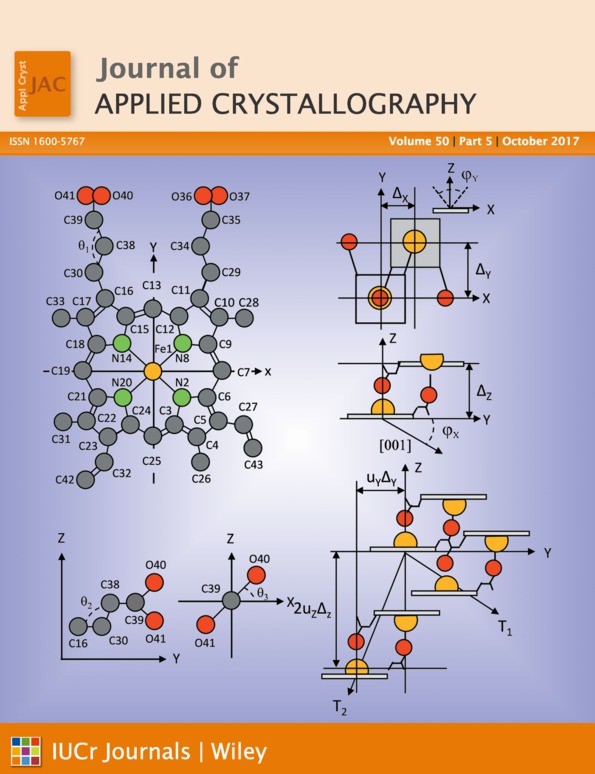An insight into the synthesis, crystal structure, geometrical modelling of crystal morphology, Hirshfeld surface analysis and characterization of N-(4-methylbenzyl)benzamide single crystals
Abstract
A versatile approach for the synthesis of N-(4-methylbenzyl)benzamide, C15H15NO, using CuI as catalyst has been reported. Single crystals of the synthesized compound were grown using the slow evaporation solution technique. The crystal structure of the N-(4-methylbenzyl)benzamide crystals has been determined by single-crystal X-ray diffraction. The compound crystallizes in an orthorhombic lattice, noncentrosymmetric space group Pna21. The crystal structure is stabilized by intermolecular N—H…O hydrogen bonds and weak C—H…π interactions to form layers parallel to the a axis. A user-friendly approach based on centre of mass propagation vector theory was used to predict the crystal morphology. The framework developed here utilizes the concept of intermolecular bond strength to discern the crystal morphology. Fourier transform IR, NMR and high-resolution mass spectrometry analytical techniques were used for the identification of functional groups and confirmation of the structure of the title compound. All of the intermolecular interactions present in the crystal structure, including the C—H…π, C—H…O and N—H…O interactions, were investigated and confirmed by molecular Hirshfeld surface analysis. From linear optical spectroscopy, the transmittance, optical band gap and UV cutoff wavelength were determined. The photoluminescence emission spectrum was recorded for a grown crystal. Dielectric measurements were performed at room temperature for various frequencies. The mechanical strength of the (001) plane of the title compound was measured using the Vickers micro-hardness technique. A piezo-coefficient of 15 pC N−1 was found along the (001) plane of the title crystals. The thermal stability and melting point were also investigated. In addition, density functional theory simulations were used to calculate the optimized molecular geometry and the UV–vis spectrum, and to determine the highest occupied molecular orbital/lowest unoccupied molecular orbital energy gap. The results show that N-(4-methylbenzyl)benzamide is a potential candidate for multifunctional optical and piezoelectric crystals.




